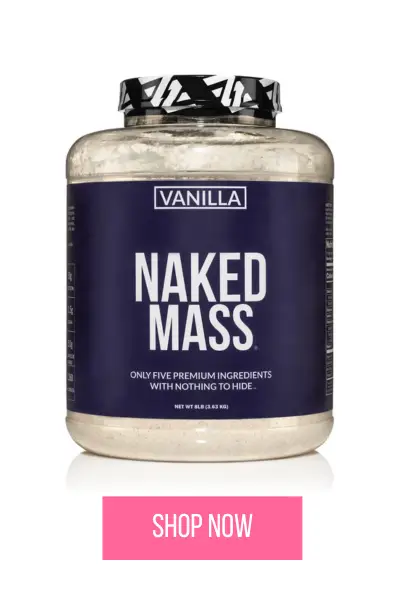What is the Best Cardio for Women?

What do you think is the best type of cardio for women?
You might be trying to tailor your workout routine to fit your goals, whether that’s weight loss, improving heart health, or just having fun while being active. To help you navigate this journey, we’ll break down the various forms of cardio and highlight which might suit your needs best.
Understanding Cardio: What Is It?
Cardio, short for cardiovascular exercise, is any exercise that raises your heart rate and increases blood circulation. Engaging in cardio workouts can improve your overall fitness, boost your metabolism, and enhance your mood. While there are numerous types of cardio, not all are created equal when it comes to your specific goals.
Benefits of Cardio
Before diving into specific types of cardio, it’s helpful to understand why incorporating cardiovascular exercise into your routine is essential. Here are some key benefits:
- Heart Health: Regular cardio strengthens your heart, enabling it to pump blood more efficiently.
- Weight Management: Cardio burns calories, which can aid in weight loss or maintenance.
- Mood Boost: Many people experience a release of endorphins during cardio workouts, leading to reduced stress and improved mood.
- Better Sleep: Consistent cardio can enhance sleep quality, helping you feel more rested.
With these benefits in mind, let’s explore some popular forms of cardio.
Types of Cardio Workouts
When it comes to cardio, there are several options available depending on your fitness levels and personal preferences. Here are some popular types of cardiovascular exercises you might consider:
➤ Steady-State Cardio
Steady-state cardio refers to maintaining a consistent intensity level throughout your workout. This might include activities like jogging, cycling, or swimming at a steady pace.
Pros:
- Easier to sustain for longer periods.
- Good for building endurance.
- Generally low risk of injury.
Cons:
- Can become monotonous if you don’t switch things up.
- Less effective for burning fat compared to high-intensity workouts.
➤ High-Intensity Interval Training (HIIT)
HIIT involves alternating between short bursts of intense exercise and lower-intensity active recovery. For example, you might sprint for 30 seconds and then walk for a minute.
Pros:
- Efficient use of time—great for busy schedules.
- Burns more calories in a shorter amount of time.
- Keeps your heart rate elevated, promoting fat loss.
Cons:
- Risk of injury if you push too hard without proper form.
- May be overwhelming for beginners.
➤ Low-Impact Cardio
Low-impact cardio exercises are easier on your joints, making them an excellent choice for those with joint issues or who prefer gentler workouts. Examples include walking, swimming, or using an elliptical machine.
Pros:
- Reduced risk of injury.
- Suitable for all fitness levels.
- Can be performed for longer durations without fatigue.
Cons:
- May not offer the same calorie-burning benefits as higher-impact workouts.
- Less effective for building muscle and strength.
➤ Group Classes and Dance Workouts
Group classes often include fun and energetic cardio workouts, like Zumba or spin classes.
Pros:
- Motivating environment with others.
- Instructors lead you through routines, which helps in learning proper techniques.
- Social interaction can enhance enjoyment.
Cons:
- Class schedules may not always align with your availability.
- May feel intimidating for beginners.
➤ Outdoor Activities
Engaging in outdoor activities like hiking, biking, or jogging can add variety to your cardio routine and connect you with nature.
Pros:
- Fresh air and a change of scenery can enhance your mood.
- Potential for varying difficulty levels depending on terrain.
- Can be a social activity if done with friends or family.
Cons:
- Weather-dependent.
- May require additional gear (e.g., good shoes for running).
➤ Strength Training with Cardio Intervals
Combining strength training with cardio intervals can provide a well-rounded workout. For example, you might perform a set of squats followed by a short burst of jump rope or running in place.
Pros:
- Builds muscle while also providing cardiovascular benefits.
- Keeps workouts varied and engaging.
- Reduces workout time by combining elements.
Cons:
- Can be challenging for beginners who are not familiar with strength exercises.
- May require access to weights or gym equipment.
Choosing the Right Cardio for Your Goals
Now that you know about different cardio options, it’s vital to align your choice with your specific fitness goals. Let’s take a closer look at how to tailor your cardio workouts for various objectives.
➤ For Weight Loss
If your primary goal is weight loss, you’ll want to focus on workouts that maximize calorie burn. Here are some effective strategies to consider:
- Incorporate HIIT: High-intensity workouts can boost your metabolism and lead to more significant fat loss in a shorter period.
- Mix Steady-State and Interval Training: A combination of steady-state cardio and interval training can keep your body guessing while burning calories effectively.
- Stay Consistent: Aim to get at least 150 to 300 minutes of moderate-intensity or 75 to 150 minutes of high-intensity cardio each week.
➤ For Cardio Fitness
To improve your cardiovascular fitness, aim for a variety of exercise types. Here’s how you can enhance your cardio endurance:
- Gradual Progression: Gradually increase the duration and intensity of your cardio workouts.
- Include Long Runs or Rides: Engage in longer sessions of steady-state cardio for endurance.
- Mix it Up: Incorporating different activities can prevent burnout and keep you motivated.
➤ For Strength and Muscle Definition
If your focus is on building strength while keeping your heart rate up, consider integrating strength training into your cardio regimen:
- Circuit Training: Combine strength exercises with short bursts of cardio (jumping jacks, burpees) in between sets.
- Use Resistance: Incorporate resistance bands or weights during your cardio for added muscle engagement.
- Challenge Yourself: Aim for higher resistance or increased intensity in spin classes or when using machines.
➤ For Mental Wellness
If you’re exercising primarily for mental health benefits, consider workouts that you enjoy and can do consistently. Here’s what to keep in mind:
- Choose Fun Activities: Dance workouts, team sports, or group classes can boost your mood while keeping you active.
- Mindfulness: Engage in activities like yoga or walking in nature, which also promote relaxation and mindfulness.
- Regular Schedule: Consistency is crucial for mental well-being, so aim to stick to a regular routine.
Crafting Your Cardio Routine
Creating a personalized cardio routine can help you stay motivated and achieve your fitness goals. Whether you prefer hitting the gym, going for a jog, or dancing, a structured plan can keep you on track. Here’s a simple way to develop a balanced routine.
Step 1: Assess Your Current Fitness Level
It’s essential to evaluate where you currently stand in terms of fitness before creating a regimen. You can start with basic tests, such as:
- How long can you walk, run, or cycle before feeling fatigued?
- What types of exercises do you enjoy, and what feels like a chore?
- Are there any physical limitations or injuries you need to consider?
Step 2: Define Your Goals
Clearly define what you hope to achieve with your cardio routine. Whether it’s losing weight, improving endurance, or just feeling healthier, outlining your goals will guide your plan.
Step 3: Choose Your Activities
Select a mix of cardio activities that you enjoy and that align with your goals. A small sample routine might include:

Step 4: Monitor Your Progress
Keep a journal or digital log to track your workouts and any changes in your fitness level. You might note how long you ran, how you felt during workouts, and any improvements in your endurance or strength.
Step 5: Be Flexible and Adjust
Life can get busy, and your goals may change. Stay flexible with your routine, and feel free to modify your workouts based on your daily schedule or how you’re feeling.
Tips for Staying Motivated
Staying motivated can sometimes be one of the biggest challenges when it comes to sticking with a cardio routine. Here are some friendly tips to keep your spirits high:
➤ Set Achievable Goals
Start with small, achievable goals and gradually increase the difficulty as you progress. Celebrating small wins can provide motivation to keep going.
➤ Find a Workout Buddy
Exercising with a friend can make workouts more enjoyable, and you’ll have someone to hold you accountable.
➤ Mix Things Up
Avoid the rut of repetition by switching between different cardio activities. Your body will thank you for the variety, and you’ll likely enjoy your workouts more.
➤ Reward Yourself
Set up a reward system for reaching milestones. Treat yourself to something nice, whether it’s new workout gear, a massage, or a fun outing.
➤ Track Your Progress
Seeing your progress can be motivating and serves as a reminder of how far you’ve come. Whether through photos, measurements, or workout logs, keep an eye on those accomplishments.
The Role of Nutrition in Cardio Fitness
While cardio is essential for fitness, nutrition is equally important for supporting your workouts and recovery. Here are some nutrition tips to keep in mind:
➤ Fuel Your Workouts
Prioritize whole, nutrient-dense foods that provide energy for your workouts. Focus on:
- Complex Carbohydrates: Foods like whole grains, fruits, and vegetables provide lasting energy.
- Lean Proteins: Post-workout protein is vital for muscle recovery. Think chicken, fish, legumes, and dairy.
- Healthy Fats: Don’t shy away from healthy fats found in nuts, seeds, and avocados.
➤ Stay Hydrated
Water is crucial for maintaining optimal performance during cardio. Make sure to drink enough fluids before, during, and after your workouts.
➤ Timing Matters
Listen to your body and recognize when you need to eat. A light snack before a workout or a balanced meal post-exercise can enhance your performance and recovery.
Conclusion
Determining the best cardio for women really comes down to personal preference, goals, and enjoyment. It’s essential to find activities that resonate with you, whether it’s HIIT, steady-state running, or group classes.
Remember, fitness is a journey, not a destination. Listen to your body, adjust as necessary, and most importantly, enjoy the path you’re on for your health and well-being. With the right mindset, you’ll not only improve your cardiovascular health but also enhance your overall quality of life.
So, what cardio are you excited to try next?
Share:
Related Posts

Understanding the 3 Body Types for Weight Loss: A Personalized Approach
Discover the best weight loss strategies for your body type—ectomorph, mesomorph, or endomorph. Learn how to tailor your diet and exercise plan for maximum results and long-term success.

How to Lose 5 Pounds in a Week Effectively
Discover healthy, effective strategies for losing 5 pounds in a week. Embrace mindful eating, exercise, and hydration for lasting results!

How Birth Control Can Contribute to Your Weight Loss Journey
Explore how different birth control methods can impact your weight loss journey. Discover tips to achieve your health goals while on hormonal contraception.

How to Reach Ketosis for Better Health
Unlock better health by reaching ketosis! Discover the benefits, strategies, and tips to transition smoothly to this fat-burning metabolic state.






